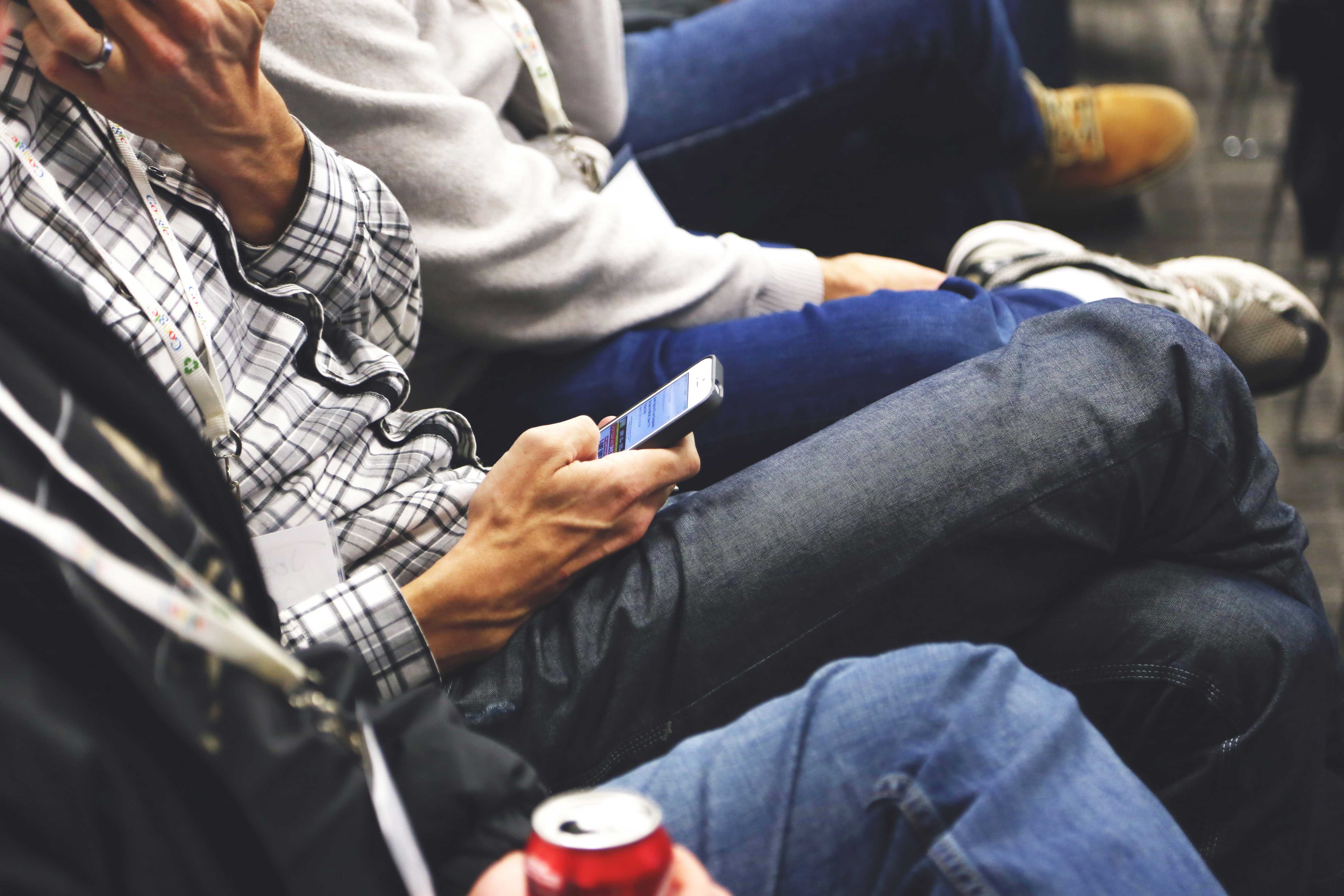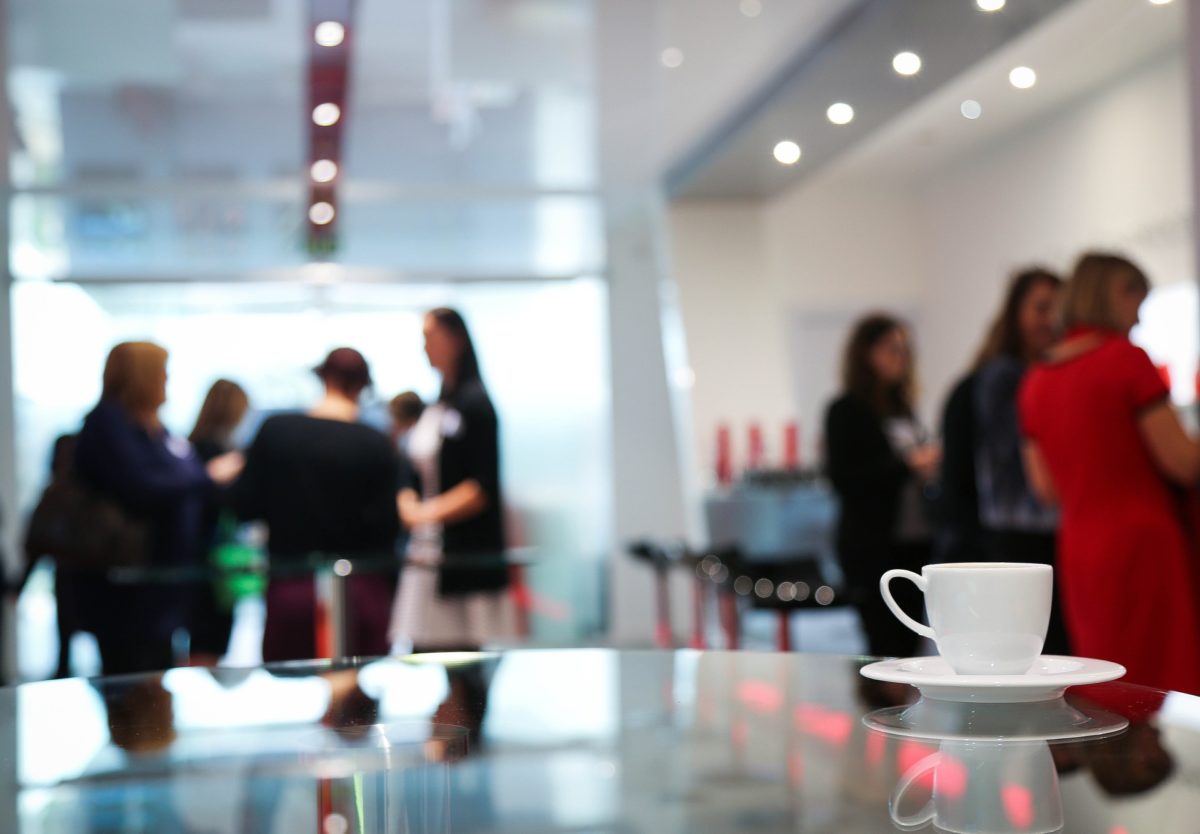Lackluster audience engagement is one of the biggest challenges that event organizers face. Even when you’ve put considerable time and energy into planning the speakers and daily events, attendees simply might not engage with one another they way you had hoped.
That’s where event experience design comes in. The shape, structure and interactivity of your event space can help you create a more engaging event experience. From building a social media photo booth to creating a corner for gameplay, follow these tips for designing a more interactive event.
Designing Your Event Space
Most conferences are set up the same way, with rows of chairs and a speaker stage up front. If you’re truly trying to create an event that’s more interactive, however, why not try mixing things up?
Eventbrite’s Ronnie Higgins explains that a more uniquely designed space can be more inspiring to both attendees and speakers. One idea for creating an out-of-the-box event plan is to consider adding bean bag chairs instead of normal chairs, or using portable walls to create zones that let attendees forms smaller, more close-knit groups. Both of these can foster an environment of collaboration.
Additionally, playing with light, color and texture on the walls could make the space more engaging. Jenny Berg at BizBash has a dozen examples of events that have done this well. Some have used hanging plants to divide spaces, some have used accent walls, and one event in Chicago even built a model El train.
For something high-tech, you could install event walls that support digital graphics and imagery. The team at Brandboom notes that many trade show booths have found outfitting walls with portable projectors or flat screen televisions invites attendee participation. And as digital imagery can be more engaging than flat imagery, using these screens at an event can make it easy to display your logo, products, or other relevant content.
Creating an unexpected event space is a great way to turn a conference experience into a lasting memory for attendees.

Surprising, Social-Friendly Design
One of the best ways to create an event design that promotes social media sharing is to create a shock factor that will excite and engage people. One extravagant yet effective example comes from The Westin hotel in New York City.
As Convene reports, The Westin added a National Running Day vending machine to its new lobby. In exchange for posting on social media, users were given a free pair of running shoes. Giving away a new pair of shoes might not be realistic for your budget, but it does provide a great example for how you can create an interactive space that surprises and delights people.
In fact, Association Now Editorial Director Samantha Whitehorne emphasizes that surprising and delighting your attendees is a great way to reap retention and engagement, too. Whitehorne says that happy surprises not only bring a smile to people’s faces; they also strengthen relationships with the person who offered the surprise. For brands, this can be a great way to earn loyalty.
What could you give away at your next event in exchange for social engagement, and how might this giveaway plan influence the design of your event space?
Designing for Photo and Video
A DIY photo booth is another way to encourage authentic social media sharing and engagement at your event. Rather than buying a portable photo booth, however, building your own and adorning the backdrop with hashtags, handles and brand logos can help ensure that your messaging gets exposure.
Marketing agency OnSharp suggests a few ideas for how to build a booth that inspires authentic engagement. If you want need the photo booth to be portable, for example, you should consider a sturdy yet flexible backdrop. Having an iPad outfitted with a photo booth app can also make it easy and efficient to take photo booth shots.
Next, think about how you can elevate the photo booth experience itself to something even more engaging. For example, Eventbrite’s Rachel Grate suggests adding a GIF photo booth to your event. A GIF photo booth takes four photos in a sequence and puts them together to create a fun, shareable moving image.
Additionally, you might create a backdrop that’s designed for a live photostream throughout the event. Sarah Parker at Union Metrics recommends setting up multiple live stream cameras at the event to capture different angles and events on social media. This can engage people who aren’t even at the event.

Creating an Event Theme
Creating an event theme is a powerful way to engage attendees and create a more interactive experience.
For example, QuickMobile’s Grace Cheung highlights a software company that added a Harry Potter-themed game to their membership conference. This fantasy game was enhanced by an event space that included Harry Potter-themed walls, posters, maps and signage. There were also Harry Potter-themed public leaderboards displayed on walls at the event so people could track the progress of the houses they’d been sorted into.
This event proved successful because it allowed participants to immerse themselves in a fantasy world while still making real world progress toward business goals. Why? Because we all love to play games, even (or maybe especially) when we are working.
EventMobi points out that gamification can be a core way to support an event theme and experience. Additionally, Victoria Rudi at Endless Events says that gamification helps activate the feeling of a common purpose among attendees, which may help them become more engaged. Despite the improved productivity, self-esteem and positivity that is often associated with gamification, however, it can’t be successful without consideration of the event design.
If you’re including a public leaderboard that needs to be viewed from all angles, for example, this must be considered when designing the space. Or, if the game follows a certain theme based on a story or geography, you will probably need to build out that space in a way that supports the theme.
For events that have AR and VR interactions, you might also create a flexible, separate gaming corner. Hublio, an event management software company, points out that having a temporary gaming area can also make it easy to add sponsorship logos to the space. Having this promotion is mutually beneficial both for your brand and your sponsors, and a well-designed corner can create a great photo-op for additional user-generated content.
Images by: Cozendo, Startup Stock Photos, Matthew Henry
